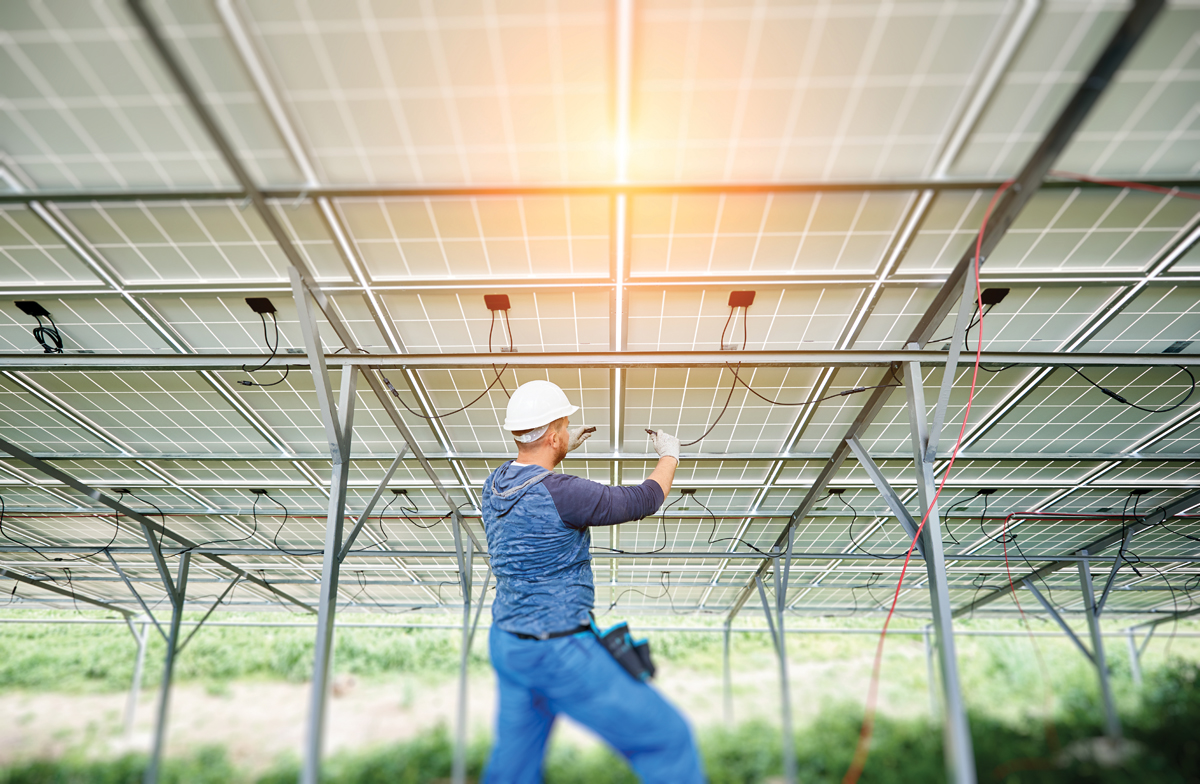Breaking into the Clean Energy Economy
By Melissa Everett | Winter 2022 | Clean Power Guide
As New York’s Climate Law takes effect and brings efficient and renewable technologies into our world at a new scale, an estimated 189,000 net jobs will be created. They include installing and maintaining solar panels and EV chargers, fixing the few things in electric cars that need maintenance, conducting energy assessments in buildings, installing insulation, air sealing, smart thermostats, and heat pumps, putting in geothermal systems for buildings and entire neighborhoods, installing battery storage systems, replacing street lights with higher-efficiency models, painting rooftops white to help them reflect heat, selling electric vehicles from cars to bikes to buses. There will be more and more work in sales, marketing, finance, management, training, communications and customer service for all these technologies. If some of this tech is produced in our region, there will be manufacturing and distribution jobs as well.
Not all fields will grow. If you are running a gas station or delivering heating fuel, you will face choices in the next decade. If you doubt that the options are abundant, reread the above. The expanding clean energy economy includes every level from entry to senior professional to management. If you have been delivering fuel and cringe at the idea of climbing on roofs to install solar panels, consider shifting to delivering components and supplies in the renewable energy sector.
What does it take to transition into the clean energy and climate tech economy? That depends on your goals and level of ambition, of course. But a few things apply pretty well across the board.
It’s helpful to understand how the stuff works, and to bring enough basic capabilities in science, math and engineering that you can communicate with the experts, even if you are landing in one of the many jobs that don’t require deep technical expertise. Whether your aptitude is strongest in visualizing and designing buildings or installing components or calculating system performance, self-knowledge lets you play to your strengths.
Experience is a critical part of any transition strategy. The good news is that there are abundant ways to create it. In fact, New York State funds qualified clean energy employers for on-the-job training of workers transitioning from other industries. The internship and apprenticeship opportunities in the clean energy economy are diverse and welcoming to people across the spectrum of skills and lifestyles.
The New York State Energy Research and Development Authority (NYSERDA) offers generous internship funding for anyone in an accredited New York college or university. For up to 480 hours, the program pays 90 percent of wages up to $17 per hour. NYSERDA has also launched a Climate Justice Fellows program, specifically designed to employ people of color, veterans, low-income and unemployed individuals, and residents of disadvantaged communities. This program provides employers with grants of $37,000 toward salary and $3,000 for mentoring and training services; employers must show skin in the game by providing benefits.
In addition, Communities for Local Power, an organization dedicated to growing a democratic green economy, offers EmPower Kingston. This eight-week paid internship program allows students of any age and background to experience a variety of industries and workplaces.
A technical internship or apprenticeship does not limit graduates to technical fields. Desiree Lyle of Saugerties used the EmPower Kingston program to learn building science and earn key credentials. She then formed a consultancy, Simply Sustainable, which offers a diverse portfolio of services to broaden access to sustainable housing, jobs and education. This year alone, she says, “In addition to teaching and testing buildings, I’m developing an affordable housing project, consulting on clean energy workforce strategy, and a scientific air quality study.”
Some green jobs are union jobs, and some unions have a long track record in this space. For example, the International Brotherhood of Electrical Workers Local 363, based in Harriman, has earned the prestigious IREC Training Provider Accreditation from the Interstate Renewable Energy Council. To expand access to this union pathway, the Newburgh-based Blacc Vanilla Community Foundation has been mentoring young people, and has referred 17 candidates to the IBEW for training.
To make it easy for entry-level workers to learn the basics in digestible bites, SUNY Ulster has created a series of “stackable certificates” that lead to a certification, Fundamentals of Clean Energy. A basic electrical class, a week of building science and a week of solar installation—taken at the student’s convenience—provide enough basics, confidence and recognition for employability.
For people with business ideas to bake, technology incubators like Columbia’s are well developed and effective. So are graduate programs such as the Bard and SUNY New Paltz MBAs with a strong focus on sustainable business.
There are also abundant and growing networks that can connect you to green businesses. Ulster County recently created UGREEN, the Ulster Green Economy Network. It’s a business to business network designed to grow the marketplace and advise the county on policy. With 42 companies joining in the first month, this network is a portal into quite a diverse ecosystem of enterprises.
As these industries grow, it is getting easier to create a business that reflects your values and special talents. Training programs build skills and understanding of the work. More and more apprenticeship and on-the-job training programs are also available to help people understand the opportunities to build a customized career.
